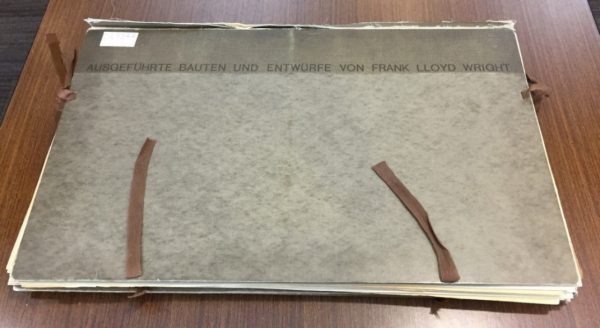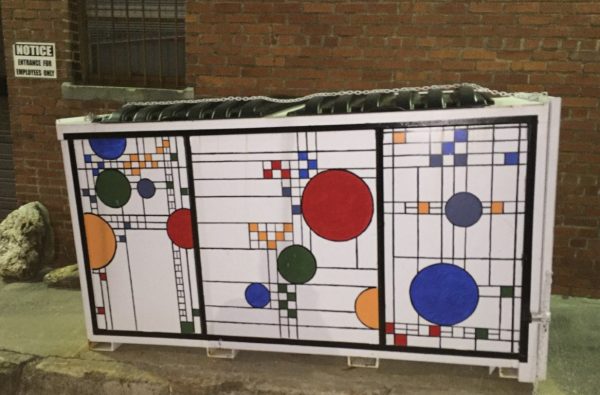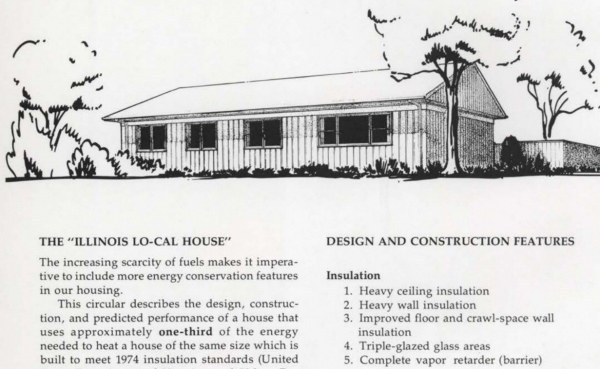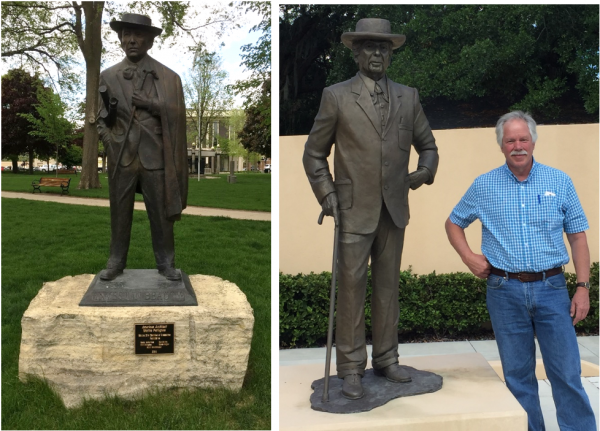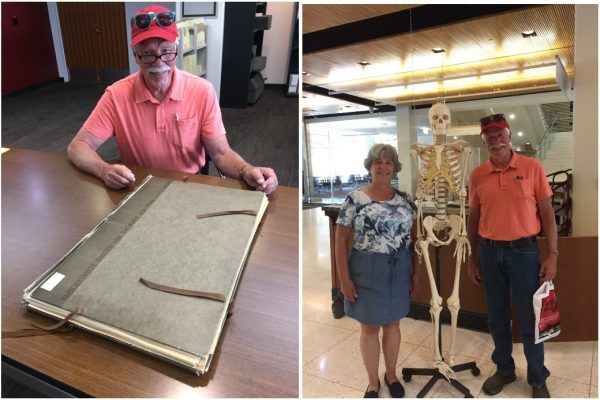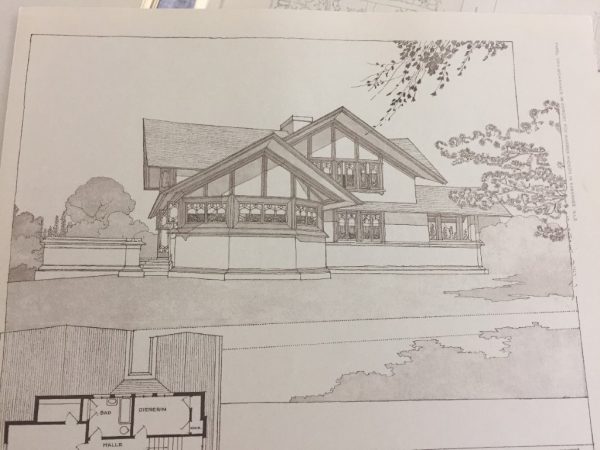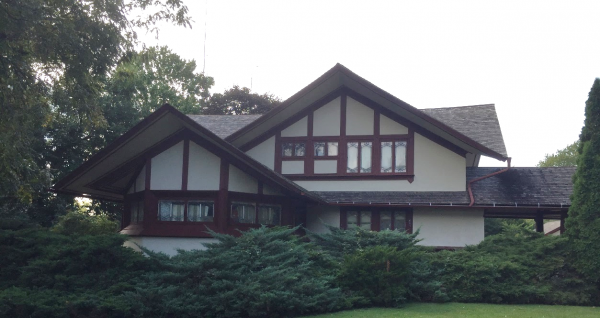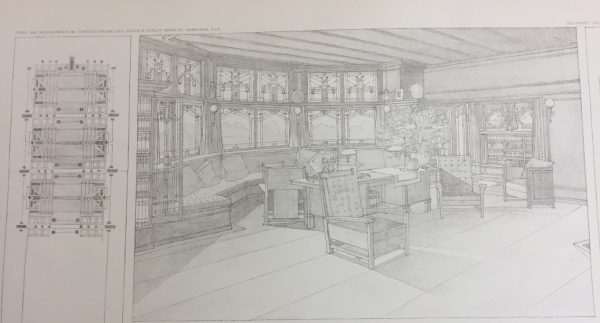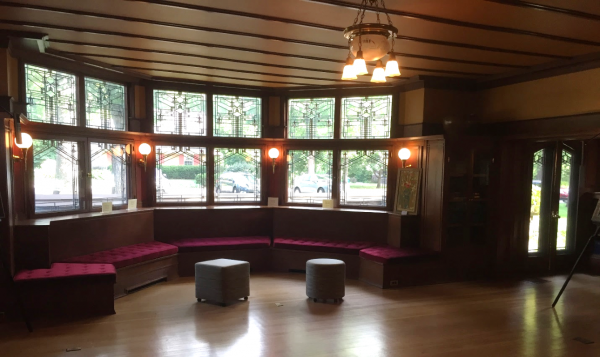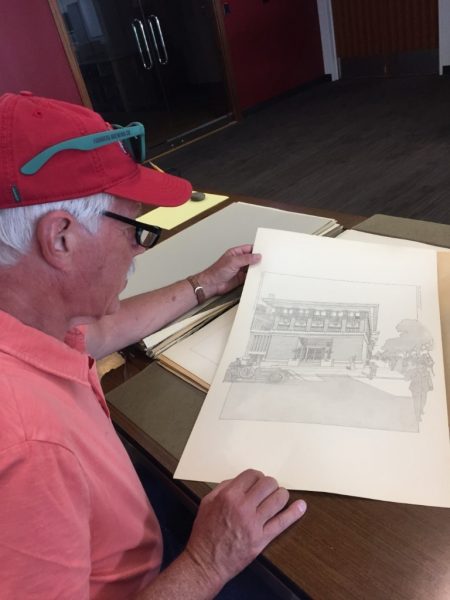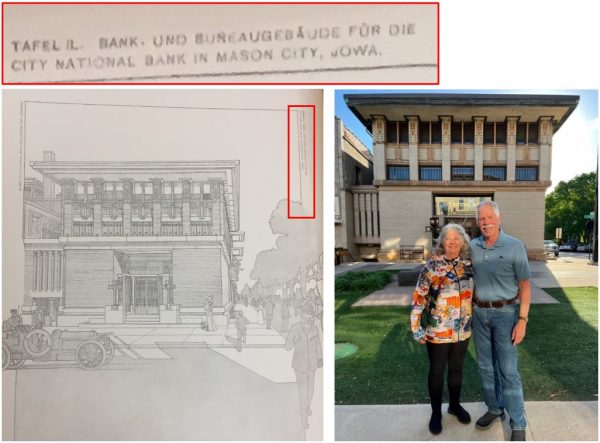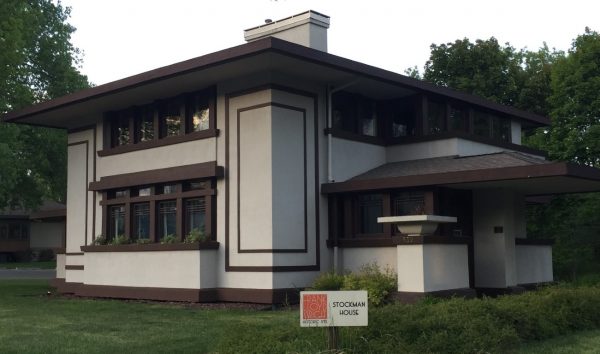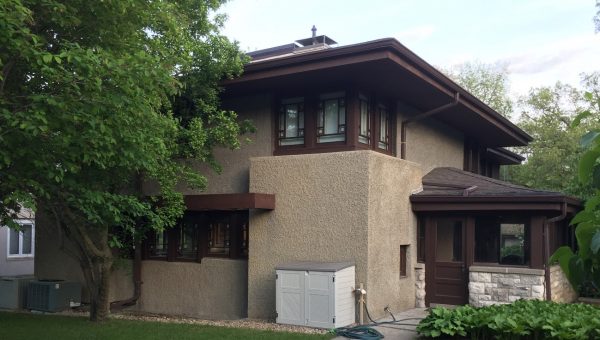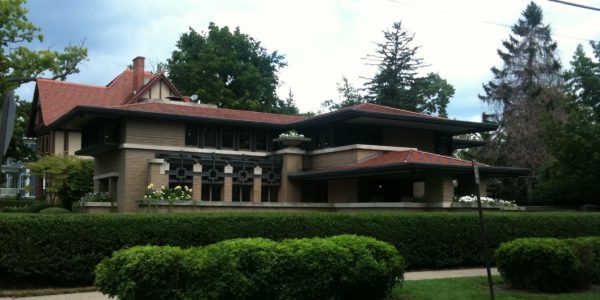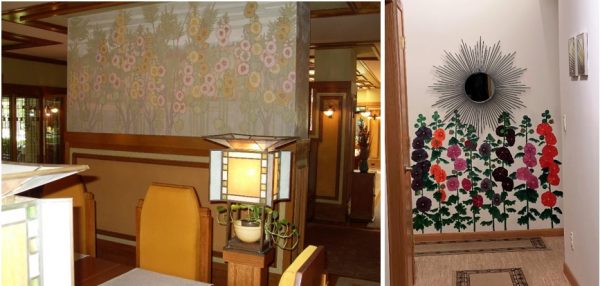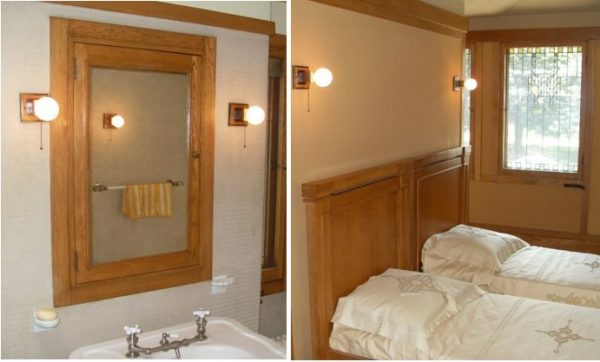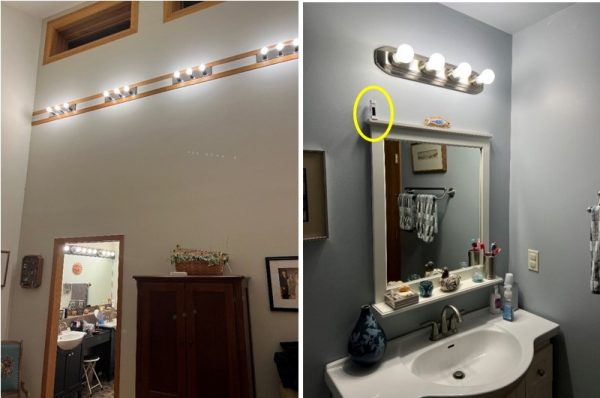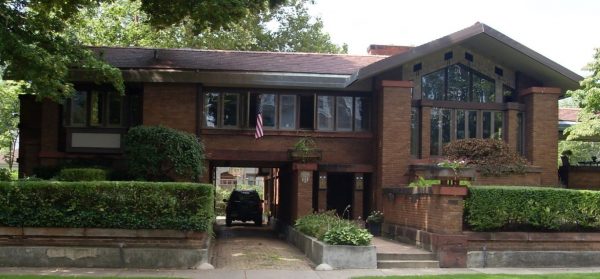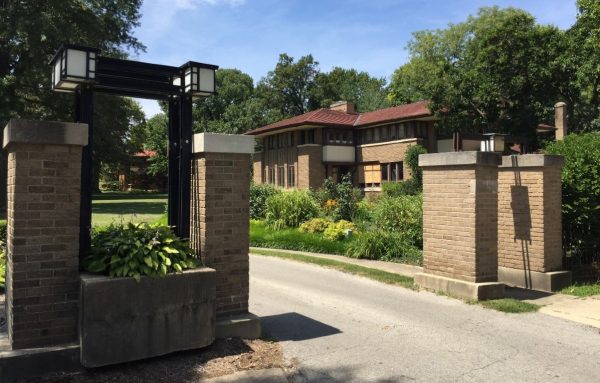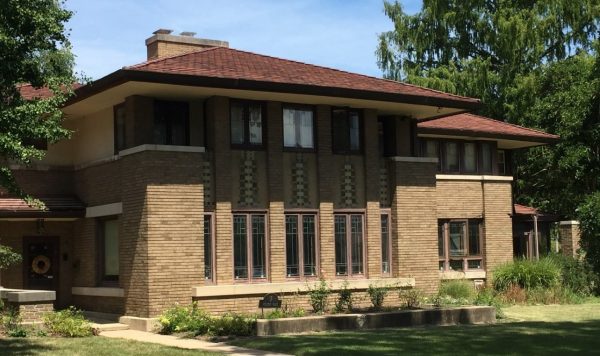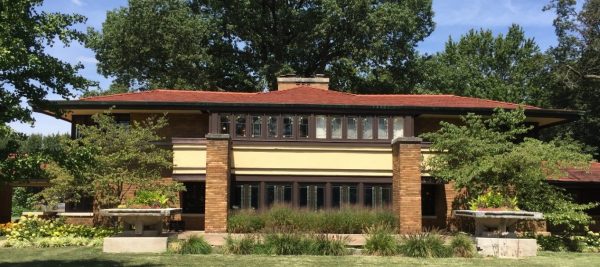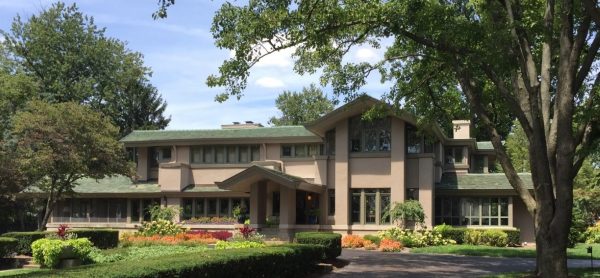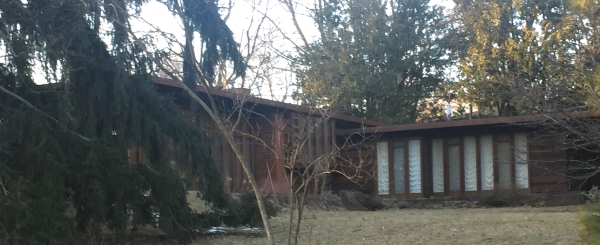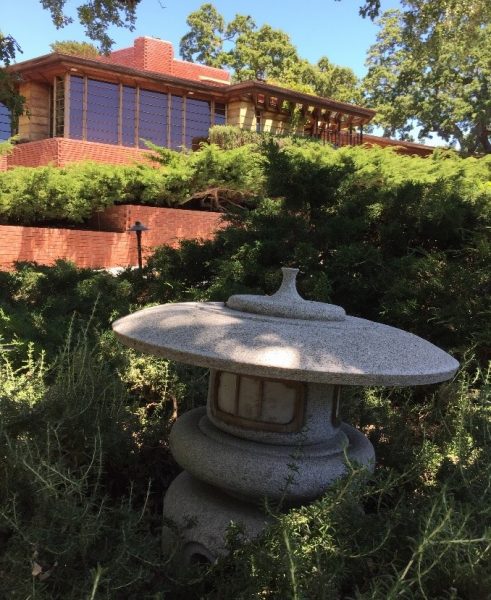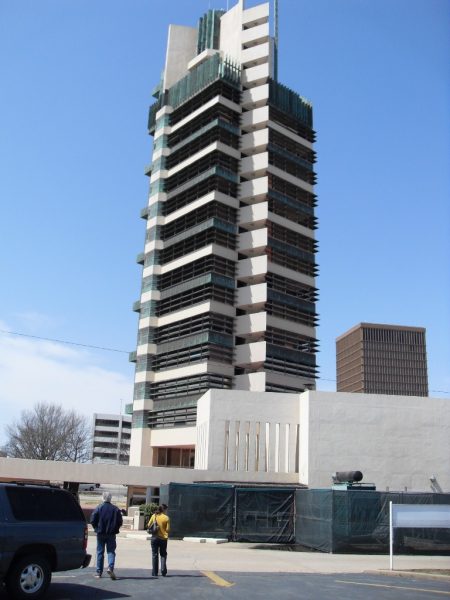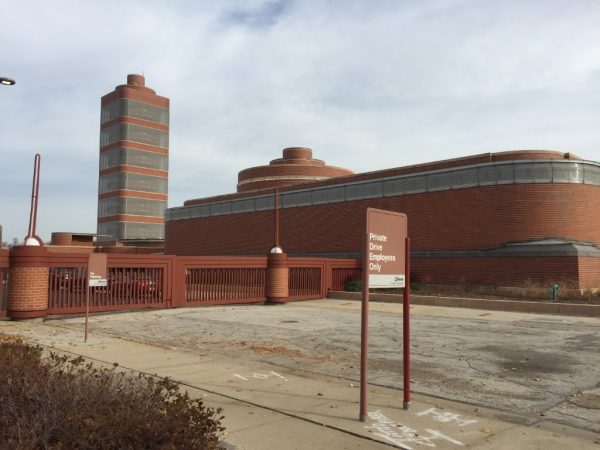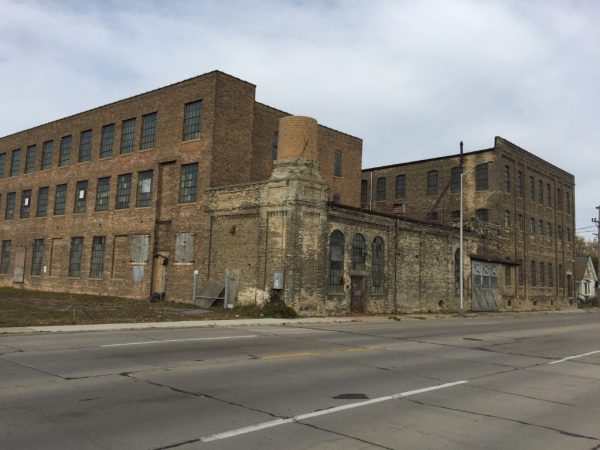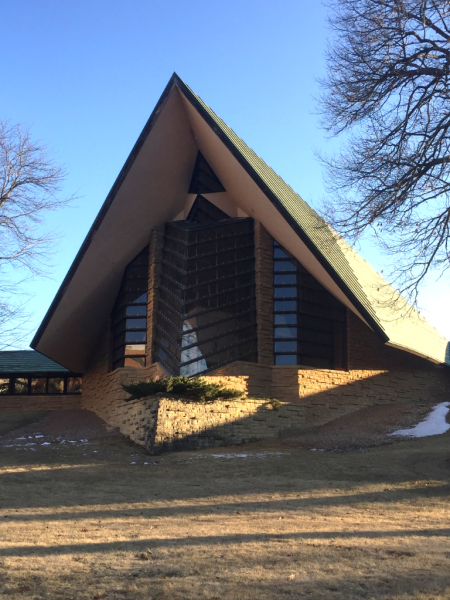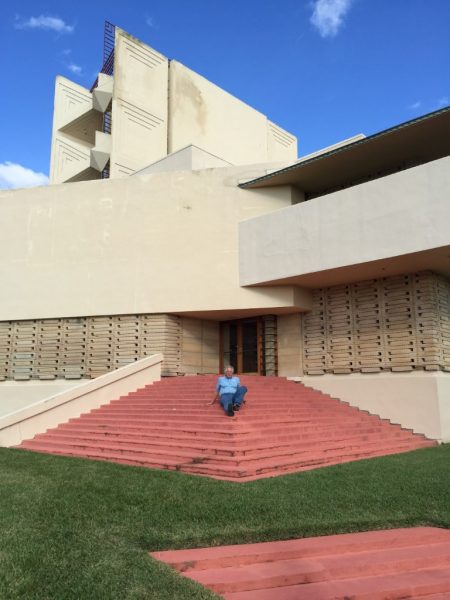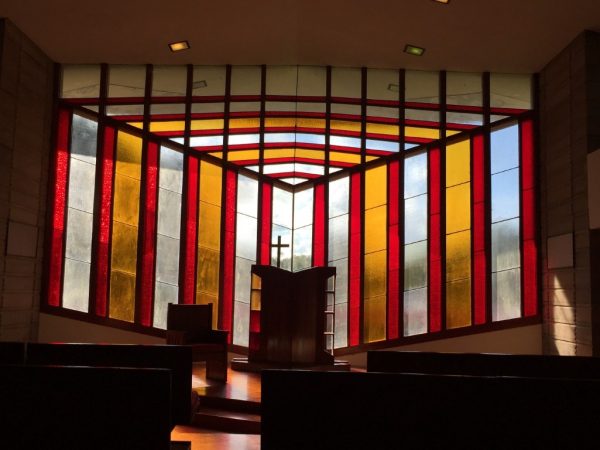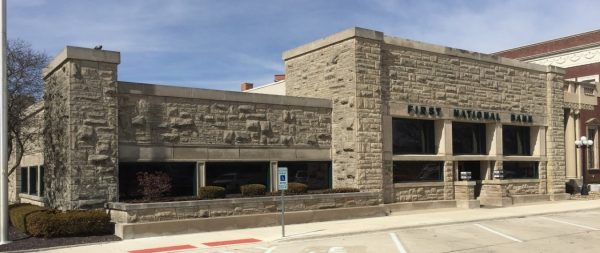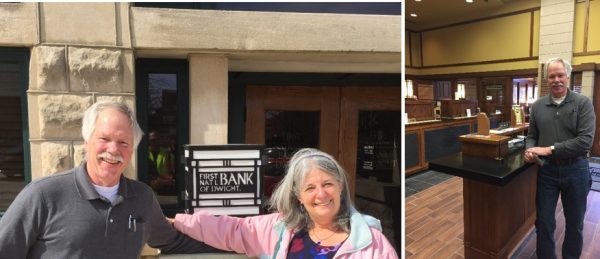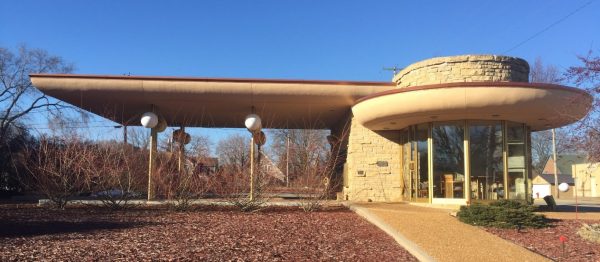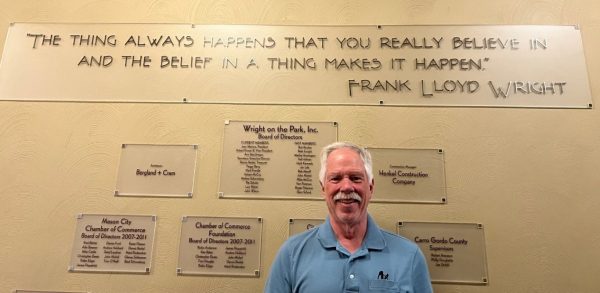This article is a celebration of you! Our readers who are taking it upon yourselves to create a better world for future generations.
It is a privilege for Build Equinox to be a part of so many wonderful home construction and renovation projects around North America! The challenge to create healthy, comfortable and sustainable homes is being met by growing numbers of homeowners, builders and architects.
Frank Lloyd Wright was born on June 6, 1867 and would be 155 years old. He was buried near his birthplace, Richland Center, Wisconsin, in a family cemetery adjacent to a chapel dedicated in 1886. His remains were moved to Arizona, but his gravestone remains in Wisconsin. Oddly, Joseph Stalin’s daughter, Svetlana, is buried at the chapel cemetery. The chapel, which a teenage FLW assisted in designing, was the beginning of FLW’s long and illustrious career.
The Wasmuth Portfolio, published in 1910, is the definitive transition to modern architectural design ushered in by Frank Lloyd Wright. Regardless of one’s view of FLW’s personal life, the genius of his architecture transformed homes from a simple collection of rooms to an aesthetically organized placement of private and personal space.
My architecture version of “six degrees of Kevin Bacon” account of FLW’s connection to others is perhaps more fanciful than fact. We start in start in Salt Lake City Utah, head to Mason City, Iowa, with stops in Wisconsin, Michigan, Oklahoma, California, Florida, and our hometown of Urbana Illinois.
The Wasmuth Portfolio, published in Berlin in 1910, includes lithographs of 70 buildings designed by Frank Lloyd Wright. FLW’s European lectures introduced European architects to his emerging modernist design philosophies. (photo: University of Utah Marriott Library, Rare Books collection; online digital access is available here)
This dumpster in Asheville NC attests to the longevity and influence of Wright’s designs.
Today’s ranch home derives its style from the Prairie School and its public and private space organization to Wright’s Usonian period homes. Do the design features look similar to today’s Passive House design principles? The 1970s “Illinois Lo-Cal House” developed foundational concepts used by today’s Passive House designers. A digital copy of the University of Illinois Small Homes – Building Research Council report can be obtained here.
Frank Lloyd Wright statues located in a city park in Mason City Iowa across the street from The Historic Park Inn Hotel, and on the campus of Florida Southern College in Lakeland Florida.
This is the Place, But Where are the Wasatch? Salt Lake City Utah
Our journey begins in Salt Lake City where a copy of FLW’s Wasmuth portfolio is located in the University of Utah’s Marriot Library rare books collection. Deb and I traveled out west during the summer of 2021 when we first emerged from the pandemic. The pandemic was far from over, but the amplitude and deadliness of infection waves coupled with our double (now quadruple) vaccinations felt safe for travel.
We drove to Seattle to visit college friends after enjoying a niece’s wedding in Bozeman Montana. Our Seattle visit was the week after our friends experienced record breaking 114F temperatures in their non-air conditioned home (they are adding a three head minisplit unit this summer). Even though Seattle’s temperature exceeds 84.9F only 0.4% of the time (ASHRAE’s cooling design day comfort conditioning criteria), and Seattle’s 50 year extreme temperature is 102.7F, the summer of 2021 was enough to convince many of the value of cool comfort even if only needed less than 0.4% of the time.
Driving west from Bozeman toward Seattle, wildfire smoke haze was continuous until we emerged from the Snoqualmie Pass. Our drive from Seattle through Oregon and Idaho on our way to Salt Lake City was a continuous smokey haze. We looked forward to seeing the beautiful Wasatch mountains as we drove into the Salt Lake valley, but the smokey haze clogged our view and our lungs.
Somewhere to the left beyond the wildfire smoke haze are the beautiful Wasatch mountains. Our Utah friends told us that Spring didn’t come in 2021.
I can’t believe the University of Utah Marriott Library Rare Books section allowed me to peruse their copy of the Wasmuth Portfolio! I’ve viewed it online many times, but holding it and seeing a personal inscription by FLW imparts a connection to those whose shoulders we stand on today. You can even check out this skeleton from the UU Marriott. Libraries are great!
The Warren Hickok home in Kankakee Illinois is an early (~1900) Prairie School design by Wright, completed before leaving his practice in the capable hands of Marion Mahony and Walter Burley Griffin.
Turning vision into reality! I’m amazed that my photos, taken years before viewing the Wasmuth Portfolio, line up so nicely with the renderings.
Interior view of the Bradley home in Kankakee, next door to his brother-in-law’s (Warren Hickok) FLW home shown above. As beautiful as the renderings are, there’s nothing like seeing the reality below. The Wasmuth Portfolio demonstrates that yesteryear’s architects were not lacking in 3D modeling!
Ideas turned into reality. The Wasmuth Portfolio shows the detail FLW and associates paid to both inside and outside a home.
76 Trombones and Mason City Iowa
Mason City Iowa is midway between Grinnell Iowa and Owatonna Minnesota, where two beautiful Louis Sullivan “jewel box” banks are located. In other words, you need to go out of your way to get to Mason City, but it is worth it. Mason City is also the childhood home of Meredith Willson, of Music Man fame, so a double bonus! Meredith would have been about 8 years old while multiple Prairie School homes were being built in Mason City.
The first thing to do in Mason City is to check into The Historic Park Inn Hotel, included in The Wasmuth Portfolio. Wright had left the US about this time (~1909), with numerous commissions undertaken by his talented staff, including architecture power couple, Marion Mahony Griffin and Walter Burley Griffin.
The Historic Park Inn hotel peaked Mason City interest in Prairie School design, leading to an explosion of Prairie School homes surrounding a bend in Willow Creek as it passes through Mason City. The wooded setting is spectacular, providing seclusion for home owners while pesky FLW enthusiasts like me try to view their homes.
Crossing the “Music Man” pedestrian bridge takes you to the beginning of a stroll back in time when Mason City’s populace was infected with Prairie School fever. Only one Wright-designed home is in Mason City as he had left for Germany, but several homes were designed by his talented associate Walter Burley Griffin, and other Prairie School architects.
Walter Burley Griffin, an architecture school graduate from the University of Illinois, is also known as the architect of Canberra Australia. He won a worldwide competition to determine the designer for Australia’s new capital city. Burley Griffin’s talented spouse, Marion Mahony Griffin, is thought to have created the artistic architectural renderings for the winning competition entry. Mahony Griffin is also thought to have contributed heavily to the Wasmuth Portfolio’s beautiful artwork.
Frank Lloyd Wright designed hotels (The Historic Park Inn Hotel in Mason City Iowa picture in the Wasmuth Portfolio rendering above) banks, office buildings, apartment buildings, factories, and many, many homes.
The Historic Park Inn Hotel in Mason City Iowa still exists as a hotel today, and you can stay in it! Cost is reasonable, several excellent restaurants are nearby, and a grand tour of one of the greatest collections of Prairie School architecture is a short walk away. Watch your head! FLW didn’t worry about tall folks.
The Stockman House in Mason City is the only Wright designed home, however, it infected Mason City with Prairie School fever, generating more homes by several architects.
Burley Griffin shows his Prairie School chops in this Mason City home. Other Burley Griffin homes in Mason City stretch beyond Prairie School traditions.
Battle Ship Gray and Grand Rapids Michigan
Steelcase furniture, which many know from battalions of large, flat gray desks, file cabinets and bookshelves, owns the Meyer May house in Grand Rapids. Thankfully, today’s office furniture has expanded and evolved from those indestructible monochrome desks of my early career. But who needs an office if you can work from a home like the Meyer May?
The Meyer May house is a Prairie School masterpiece and wonderfully restored thanks to the Steelcase company. And, it’s free to visit! There are other reasons to visit Grand Rapids….some of the best breweries anywhere, a Presidential Library, the Meijer gardens, and our friends at the Green Home Institute. Just down the street is a wonderful Marion Mahony designed home. Marion was a key FLW associate and architect, who we’ll discuss more below. Not too far away in Midland Michigan is the Alden B Dow home, another brilliant architectural masterpiece. Alden was also the inventor of today’s foam-cored SIPs (Structural Insulated Panels), with early examples from the 1950s located in Midland, home of his father’s Dow Chemical corporation.
The Meyer May home was built in 1908-1909, at the time when so much activity was happening in Mason City and elsewhere. Wright’s firm was busy as Wright, in his early 40’s, became detached and ultimately left his staff to carry out the firm’s commissions.
The Meyer May house in Grand Rapids Michigan is a masterpiece in architectural design and ornamentation. The Meyer May is in a neighborhood of period homes, such as the one behind it, that add emphasis to the truly revolutionary design of Prairie School homes.
George Niedecken’s hollyhocks in the Meyer May house is one of my favorite murals. It took me years of begging, but my artistically talented daughter, Melissa, recently created a hollyhocks mural in Equinox House that I enjoy every morning.
Household electricity was in its infancy in the early 1900s. Wright knew lightshades reduced lighting efficiency and often opted for “bare bulb” fixtures. Keep bare bulbs above eye level to avoid glare.
Unashamedly, Equinox House borrowed Wright’s bare bulb design throughout the house. Note the small (wireless) temperature/humidity sensor that detects bathroom humidity, triggering the CERV2 into action. A wireless occupancy sensor (not shown) detects bathroom occupancy. In 2010 when Equinox House was built, LED bulbs cost $25 each! Just as we’ve seen with flat screen TVs, solar PV and LED bulbs, electric vehicles (EVs) will drop well below the price of today’s combustion vehicles.
Marion Mahony Griffin
Frank Lloyd Wright portrayed himself as the sole creator of his architectural masterpieces, downplaying and often alienating those who also deserve credit. Two of the most important contributors to FLW’s Prairie School works were spousal collaborators Marion Mahony Griffin and Walter Burley Griffin. Mahony was an early graduate of MIT’s architecture school while Burley Griffin was an early graduate of the University of Illinois architecture school. MIT was the first architecture school in the US, while the University of Illinois, the second US architecture school, graduated the first students!
Mahony did not pursue her own commissions, and as far as I’m aware, only three Mahony creations survive in the Midwest. I didn’t know about Marion Mahony prior to visiting the Meyer May house in Grand Rapids several years ago. As Deb and I walked around the Meyer May neighborhood, one private home stood out above others. It didn’t look like a Wright home, but we knew it was something special. A bit of digging led us to discover it was a Mahony commission.
Wright’s abandonment of his family and practice left others, including Mahony and Burley Griffin, to complete projects and design commissions across the midwest. It is interesting that Mahony, while completing Prairie commissions in the Wrightian style, created her own, instantly recognizable aesthetic. Mahony homes have strong, vertical stances, bold roof lines, and light ornamentation.
I didn’t know other Mahony homes existed besides the Grand Rapids home until we had the opportunity to visit an FLW Prairie School home in Decatur Illinois. The owner was selling his treasured home, and graciously opened it to the general public for a weekend. The house, built for industrialist EP Irving, is located in a small development called Millikin Place. As we walked down the block to the Wright home, I told Deb that the first house we passed had a similarity to the Mahony design in Grand Rapids.
This Mahony designed home in Grand Rapids stands out from the surrounding neighborhood similar to the Meyer May house down the street. Tastefully decorated with strong, bold elements, this home is a delight! If you know the owners, please ask if they’re willing to let me intrude.
Entrance to Millikin Place in Decatur Illinois. As one enters, it is clear this is not your normal neighborhood development.
Different yet similar to the Grand Rapids Mahony design. Strong, vertical structures with light ornamentation and a bold roof line.
The horizontal lines identify this Millikin Place (Decatur IL) house as a Wright Prairie style, however, Marion Mahony’s contributions are readily seen in the home’s bold appearance.
Just beyond the “Wright” designed home is another home that screams “Marion designed this house”! It’s gorgeous! Kudos to the homeowners for their care to maintain this treasure.
Usonia! Houses for the Masses….kind of
When Wright returned from Europe, he was no longer in demand. Commissions were few and far between, and Prairie School design was passé. Remarkedly, as Wright entered his 60’s, his career revived as he created Usonian Homes, a modern and meant-to-be affordable homes for the masses. But affordable, they were not. They are beautiful, modern, and represent a critical step toward the organization of a home into public and private spaces.
An unremarkable, often hidden entrance is one characteristic. Entrance hallways have low ceilings, producing a claustrophobic feeling that is immediately relieved as one emerges into a large, high ceiling open living room and dining area. Kitchens were considered utilitarian and a waste of public space, and were not brought into the open living area as in many of today’s homes. Bathrooms, for the same reason of not displacing valuable public space, are also utilitarian, with enough room to turn around, do your business, wash up, and exit.
Usonian homes feature simplicity of materials, reflecting one aspect of Wright’s “organic architecture” concept, the use of simple, natural materials such as stone, glass, wood and metal. Plywood, an innovative material in the 1930s when initial Usonian homes were constructed, was widely used in Usonians for furniture and room furnishings. Custom-built furniture and features kept the homes from achieving a level of affordability for the masses.
We designed Equinox House as our modern take of a Usonian. Our architect, Jean Ascoli, worked for Taliesin Associated Architects, the firm founded by Wright, although that is not the reason we selected her services. Jean created the modern look we were looking for inside and outside. While most visitors to Equinox House are interested in energy, our barrier free, 3ft wide pocket doorways and accessible kitchen and baths (barrier free shower, too) provides us with age-in-place capability more valuable than energy. We hope to have many years to enjoy this wonderful house without the worry and expense faced by so many of our elderly as their homes become hazardous and confusing.
An uncelebrated entrance way leads into an entrance hallway that emerges into our open living, dining and kitchen area with 22ft tall ceilings. Unlike yesteryear’s Usonians, Equinox House is super-insulated, super-sealed and smart ventilated. At $125 per square foot (yes, we’re in central Illinois where house construction cost is decent), Equinox House demonstrates that zero-plus energy homes are affordable now. Even though you may live in a high construction cost region of North America, high performance, renewable energy powered healthy homes will economically compete with conventional construction.
Usonian homes were meant to be economical homes for the masses. While FLW’s aspiration to develop an affordable home was laudable, expense related to highly detailed and customized features inhibited the homes’ success. Equinox House is our interpretation of a Usonian home. Top photo is the Jacobs house (Madison WI), considered the first (1937) of FLW’s Usonian designs. The middle home is the Hanna house at Stanford University, also built in 1937. The bottom Usonian house is located on the campus of Florida Southern College. Although designed in 1939 as housing for faculty, Florida Southern College’s Usonian was only recently constructed.
Schools, Banks, Sanctuaries, Offices and Factories
All indoor spaces must be healthy and comfortable for us to attain maximum cost savings benefits. A poorly ventilated public space where we shop, work, learn, transport and worship will undo all of the benefits of a healthy home. Here are a few examples of Wright’s non-residential commissions.
Price Tower, Wright’s only skyscraper, was designed as the administrative offices for a petroleum engineering company in Bartlesville OK. Curiously, an element of Wright’s design was an avoidance of right angles, resulting in custom-designed furniture for every office and some funky stairways. The tower was later converted to a residential building, where Bruce Goff (another one of my favorite architects) lived in the 1950’s! Goff has the distinction of being one of the few who maintained a life long relationship with Wright that never soured.
The familiar SC Johnson buildings in Racine Wisconsin are wonderful. The tall research building required employees to wear sunglasses indoors on sunny days. Sometimes form doesn’t follow function.
A few blocks away from the SC Johnson building are several old factories. This magnificent building is past its glory days. It’s time to re-invest in cities like Racine, creating opportunity for our youth.
This FLW designed Unitarian Church in Madison Wisconsin is every bit as magnificent inside as it is outside.
This chapel on the Florida Southern College campus is one of many FLW and FLW-inspired buildings. The college’s library, administration offices and other buildings gives you a unique, FLW architecture surrounded experience.
The beautiful interior of Florida Southern College’s FLW chapel makes up for poor sermons. Note: as a “PK” (preacher’s kid), I have a dispensation to make fun of clergy.
Dwight Illinois is another place you’re not likely to pass through, but it is worth a diversion to see this 1905 FLW bank. Long low lines, but no obvious Prairie Style cantilevered roof. The understated look of this bank is the opposite of many banks of this period sporting massive pillars and porticos that look down on customers.
It’s great to see the building’s continued use as a bank. Once you enter, you immediately feel you’re in Wright’s domain.
As long as we’re discussing banks, this wonderful gem in Spring Green Wisconsin was designed by Wes Peters, a Wright protégé and the person who replaced Wright after his passing to lead Taliesin Associated Architects. Peters was married to Svetlana Stalin after meeting her through Wright’s spouse, Ogilvana.
This FLW saying in The Historic Park Inn in Mason City says it all. I believe in our ability to create a bright future for others. We can build healthy, comfortable, sustainable, economical, and beautiful buildings for ourselves and for future generations who will be inspired to do the same. It is up to us, individually and collectively in our communities, just as Mason City in the early 1900s shows how local desire can move a community to achieve great things.





